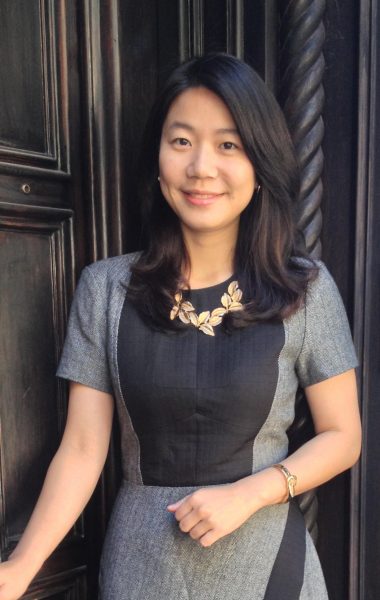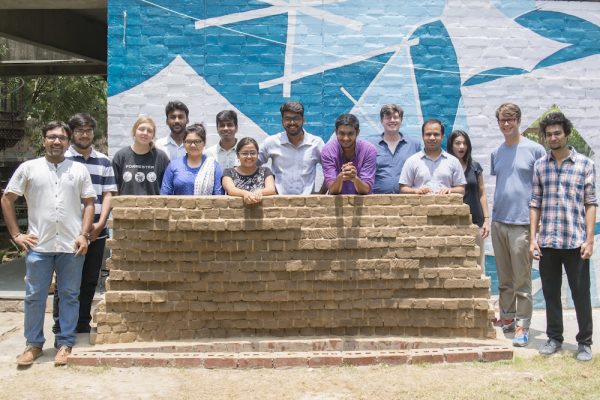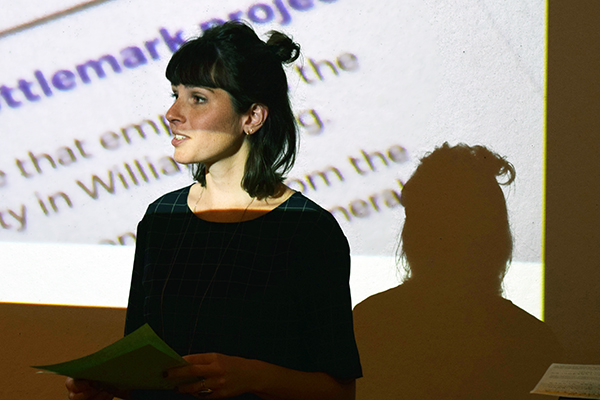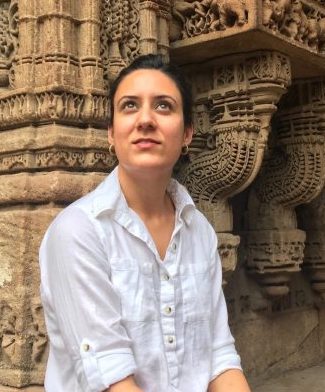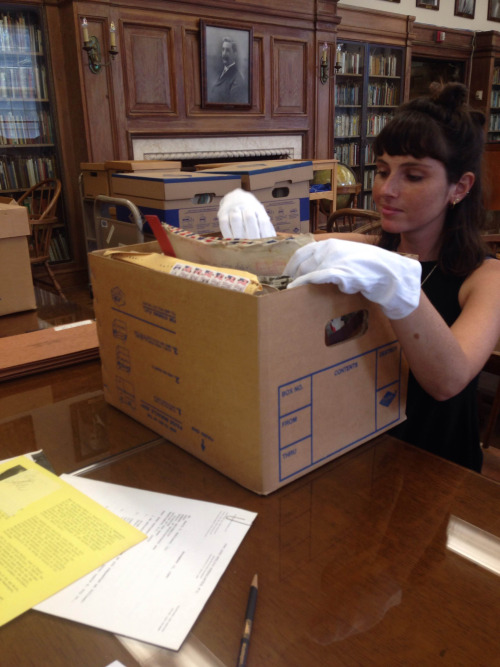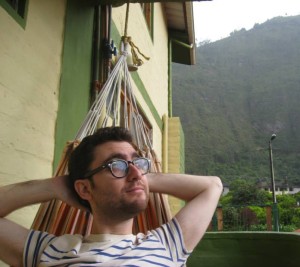
Salem Tsegaye is Assistant Director of the Arts Research Institute at Virginia Commonwealth University School of the Arts. There, she supports faculty research development, fosters interdisciplinary collaboration, and facilitates public dialogue about the role of – and potential for – artists and designers in society. Salem previously worked for the New York Community Trust, a community foundation, managing two donor collaborative funds supporting arts and cultural advocacy, policy and equity, and immigrant rights advocacy, immigration legal services, and capacity building for immigrant-led nonprofits. She also has worked as a grant writer for the Queens Museum and has provided technical assistance to government agencies and small and mid-size nonprofits in Washington D.C. Salem holds an MA in Design Studies from Parsons The New School for Design and a BA in Cultural Anthropology from Duke University. She also currently serves as an editorial team member for Createquity, a virtual think tank and online publication investigating important issues in the arts.
Would you mind sharing a little about your background leading up to your studies in the ADHT department at Parsons?
I graduated with a bachelor’s in Cultural Anthropology, supplemented by a certificate in Child and Family Policy and a minor in English. I had a general interest in culture – ideas of belongingness, how we come to understand ourselves and others, how we come to identify with certain groups – from both a social science and humanities perspective. Education is central to this, inclusive of but not limited to formal education. Equally important is the learning that takes place outside of schools, like at home with family, through cultural institutions and through media and entertainment. I spent most of my time in undergrad thinking about these intersections and using qualitative research to understand people’s experiences.
After college, I worked at a small nonprofit called Mosaica: The Center for Nonprofit Development and Pluralism, where we provided technical assistance and capacity-building support to community-based organizations serving marginalized populations in health, education, immigration and other areas. Our job was to help organizations operate effectively, so they are meeting the needs of these populations. This meant ridding ourselves of assumptions about people’s needs, listening (quite literally) to them express their needs and circumstances, and using that information to develop a plan for optimal service provision.
Over time, I realized I wanted to return to my passion of studying culture and had a growing interest in museums, mostly a desire to investigate how museums interpret community engagement, and how they put this philosophy into practice. For me, this was about content and context – that is, the material culture displayed, the means by which they are presented and how audiences come to interpret the value of objects. In some sense, I wanted to see if museums are really serving the people they intend to. I came across the Design Studies program and realized it would afford me the flexibility to study all of this without being tied to a specific discipline.
How did your undergrad studies in Cultural Anthropology inform your graduate studies in Design at Parsons ADHT?
The first big takeaway from my studies in Cultural Anthropology is the value of qualitative data. The social sciences really prize quantitative data – there are certain things that numbers afford, like the ability to generalize, that qualitative methods don’t (at least not to the same degree). On the other hand, methods like ethnography, which allow you to get really up close and personal about people’s beliefs and customs, capture complexities that numbers don’t. When it comes to studying the arts and design, the qualitative is critical. I came into the program knowing that my skillsets would not only be transferrable but welcomed.
My graduate thesis was a case study on the Queens Museum, namely how the museum’s philosophy of openness manifests socially and spatially. While I was at Parsons, I took a couple of courses in Milano, Erica Kohl-Arenas’ Participatory Community Engagement, which honed in on community-building practices and how to facilitate meaningful dialogue, and Shannon Mattern’s Urban Media Archaeology, which taught me how to gather information, map data and form arguments using a variety of media. I think my experience with qualitative research lent itself to experimenting with these other methodologies.
Do any of the lenses you’ve developed in your Cultural Anthropology studies strengthen your work in the Design fields?
Absolutely. The second big takeaway from my studies in Cultural Anthropology is the notion of cultural relativism, or the idea that you should only assess another culture from the perspective of that culture, letting go of any biases you might carry from your own. I think this also is important in the design world, and increasingly so, as indicated by the rise of “human-centered” design. It goes back to what I had mentioned earlier about listening to people’s needs and using that information to carry out your work in a more meaningful and effective manner.
Design Studies is a pretty expansive domain, so I didn’t necessarily go into the program with the intention of getting a job in design. Rather, it was important for me to apply my existing skills to learn more about a field that was new to me, about the perspectives of studio practitioners and about the possibilities for participatory and socially-engaged creative practice. I say creative practice, generally, because I think much of this also translates into the arts, which is where I ended up.
Part of what allowed me to learn so much was the fellowship I had in my second year of the program. I was fortunate enough to work at New York City’s largest community foundation with the program officer who oversaw the foundation’s arts grantmaking. The incomparable exposure I had to arts organizations, paired with my boss’s stellar mentorship, really allowed me to see how I might translate my academic work into something more pragmatic. After a short stint at the Queens Museum post-graduation, I returned to the foundation to manage a fund supporting arts advocacy and cultural policy and equity. Now, I work at Virginia Commonwealth University School of the Arts, where I support faculty research development and facilitate interdisciplinary partnerships and public dialogue about the creative fields.
What do you miss most about living in New York City? Attending The New School?
There’s a lot that I miss about New York City, from the 24-hour bodegas to not having to drive! But of course, the arts and cultural offerings would be at the top of my list. Richmond actually has a pretty big creative community, but it’s also about 2 percent of New York City’s population. I think one of the things that’s particularly awesome about Richmond is its affordability, which really allows the creative community to thrive. Like most cities, Richmond is experiencing growth and urban revitalization, but far less rapidly than the major cities across the country. A huge draw was the possibility to come here and find ways to advocate for equitable development, which became increasingly difficult to do in New York.
I have to say, The New School is a pretty special place because of its incredibly progressive student population. It’s pretty great (and pretty rare!) to be surrounded by so many peers who share your values. That was the best part for me, and probably what I miss the most. Second would be the magical urban campus. My undergrad campus was beautiful, but it had a pretty traditional college campus aesthetic. TNS was the perfect contrast.
Any advice for students beginning their MA Design studies at Parsons?
Yes, three things! Come into the program with a pretty clear idea of what you want to study, and if applicable, what other divisions of The New School besides Parsons you’d like to take classes in. The two years go by fast, so you want to come in as clear-headed and as organized as possible. Secondly, be proactive in seeking advice, resources and collaborators to facilitate interdisciplinary study. You exercise a lot of academic independence in the program (and grad school, generally), so don’t be afraid to seek guidance. Your general rule of thumb should be: It never hurts to ask! Lastly, find a job or fellowship that complements your studies. A huge benefit of going to school at Parsons is being in New York City. Take advantage of this huge opportunity for professional development!
